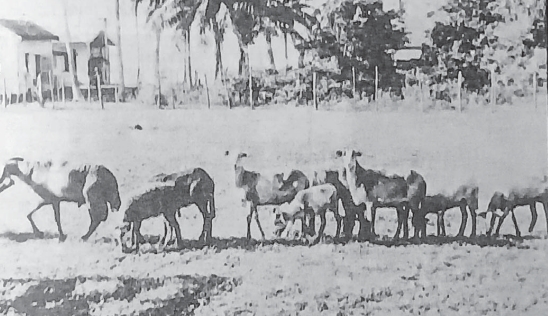THE year 1990 marked the end of the 10-year quarantine confinement of sheep on Makogai, said the principal Veterinary Officer of the Ministry of Primary Industries and Co-operatives Ken Cokanasiga.
“During the 10-year period no signs were seen that would indicate the presence of the disease scrapie,” stated Mr Cokanasiga in an article published by this newspaper on March 9 that same year.
“This disease was of great concern to us, leading to our imposing the quarantine period.”
Mr Cokanasiga said during these 10 years, crossbreeding programs were made between the imported Barbados Black Belly sheep and various woolly breeds such as Polled Dorsets, Coriedales, Perendales and Wiltshire Horns.
“The more suitable cross for our conditions and needs was found to be crosses based on Wiltshire Horns and the Barbados Black Belly,” he said.
In the meantime, research stations in Nawaicoba, Nadi, Wainigata, Vanua Levu and Dobuilevu in Ra were being developed as sheep stations. At the end of 1989, there were 4382 sheep in all four government stations.
“This is the start of the movement of live animals from Makogai to our three other government stations,” he said.
The new sheep breed sheds its wool during the warmer months, avoiding shearing costs which could be expensive.
It maintains a lambing percentage of around 150 percent to 180 percent with high birth weights. Its meat is lean with a low percentage of fat in the carcass and is durable under our tropical conditions.
The Mutton Sheep Project at Makogai began in 1980 following a feasibility study carried out in 1979 which examined the viability of a mutton sheep industry in Fiji.
The study made positive recommendations and suggested developing a breed suited to Fiji’s conditions.
Earlier attempts to raise sheep in Fiji were not successful due mainly to unsuitable types of sheep used.
The 1979 study suggested a cross-bred meat sheep based on the Barbados Black Belly and various wooly breeds.
The first consignment of 37 Barbados Black Belly sheep arrived in Fiji from the United States in 1980 to commence the project.
Mr Cokanasiga said once the mutton industry was fully established, it would cut down our mutton imports which currently stood at $7million annually.
“It will create rural employment, a source of protein to rural dwellers and the meat is consumed by all races in Fiji.
“The animal is less environmentally damaging when compared to goats, particularly soil erosion.”



